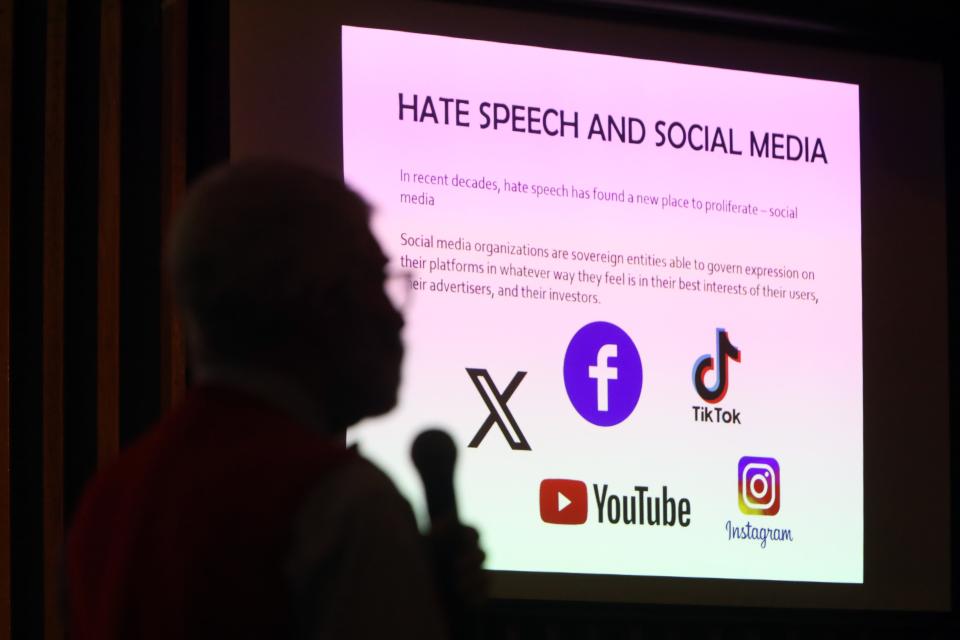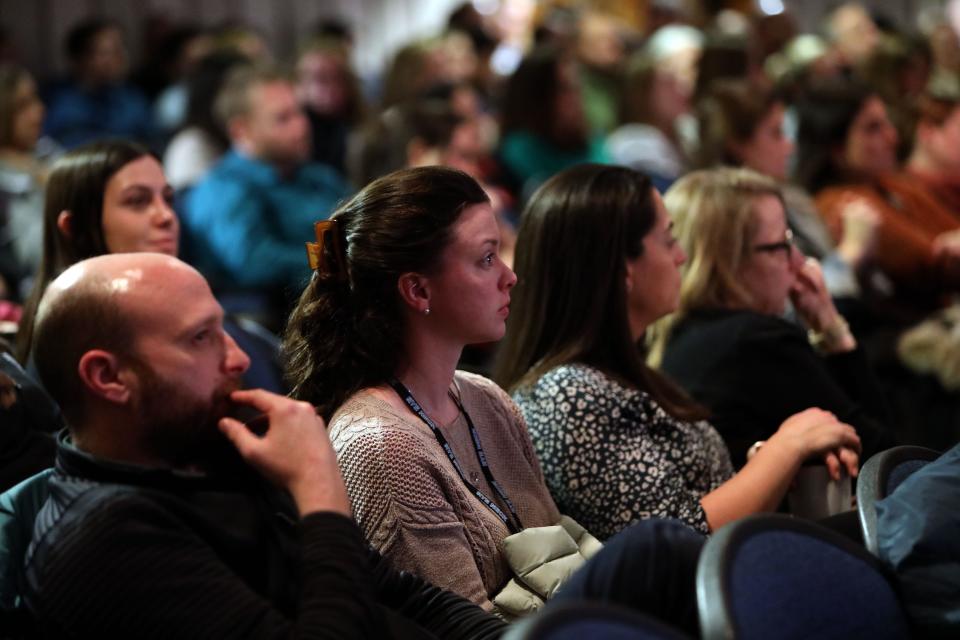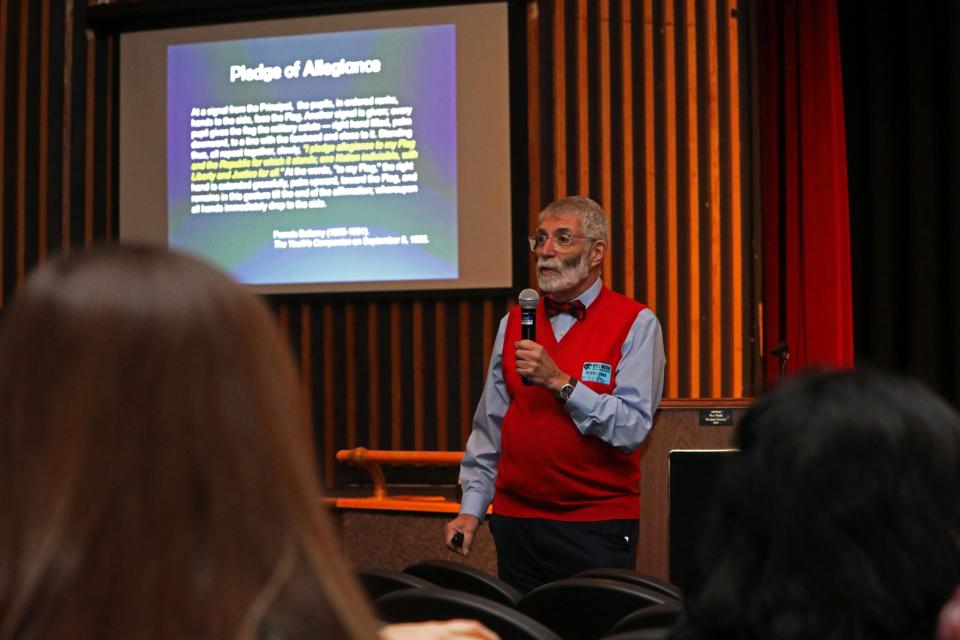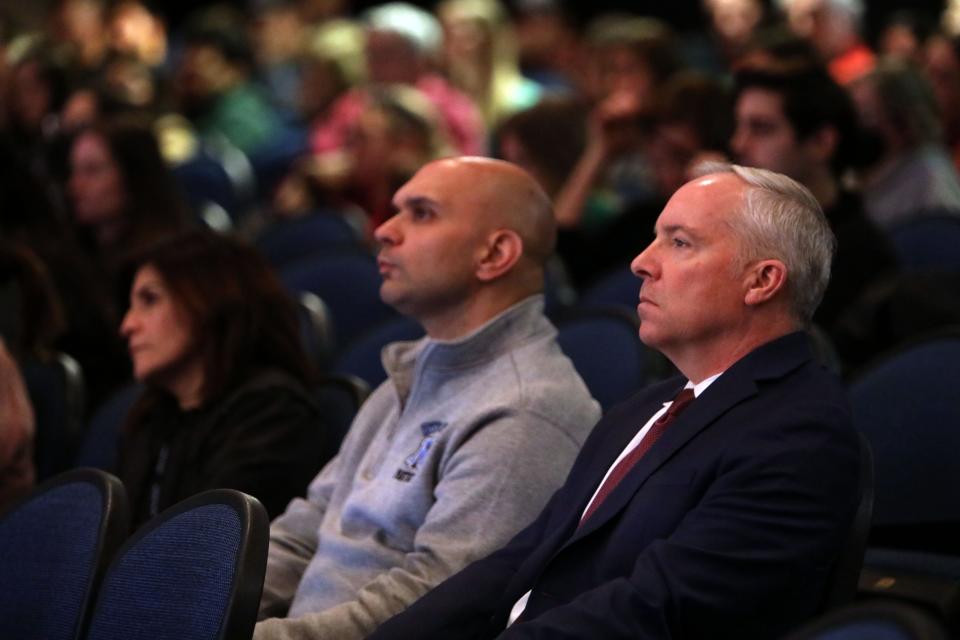Students are watching Israel/Hamas war on social media, but what do they learn in school?
The passionate reactions of young people to the Israel-Hamas war have reminded many of the outcry over the Vietnam War.
That passion has fueled school walkouts and protests. School districts have also faced criticism, from students and communities, about their responses to protests and their statements on the war itself.
"One of the things that I have heard from teachers is that they are surprised by the passion connected to either perspective," said Lisa Kissinger, president of the New York State Council for the Social Studies. "I hear this particularly from teachers of 12th grade students."
But what do New York students learn about the Middle East and the history behind the current conflict?

Unlike during the Vietnam War, young people are watching today's violence play out on social media, getting information in real time and from sources with varying degrees of credibility and reliability. But in New York's schools, social studies classes also introduce some history of the Middle East and background on the conflict between Israel and the Palestinians and the wider Arab world.
The Middle East, Judaism, Islam: What do students learn?
In general, the depth of any of these topics grows as students get older. Younger students learn about the concepts on a more basic level, such as the idea that there are different religions and cultures throughout the world.
New York state's social studies framework, which outlines which broad topics should be covered in each grade, includes teaching students about point of view as early as grade 3 and bias as early as grade 4.
Older students delve deeper, learning about the creation of the State of Israel in 1948, and opposition to it, while in high school.
Teachers expose older students to a variety of primary sources, or first-hand accounts, so they get all sides of an issue, said Susan Chester, Eastchester's K-12 supervisor of humanities. "This allows students to then draw evidence-based conclusions."

Here is what students learn regarding different cultures, other nations, the Middle East, Judaism and Islam by grade level in New York:
Grades K-2: Students are first introduced to the ideas of themselves, their families and communities, and other families and communities, Chester said.
Grade 3: Students learn about other countries and their cultures. For students that young, lessons revolve less around theology and more how religions are celebrated, said Steve Goldberg, a retired longtime social studies chair at New Rochelle High School, who helped lead the creation of a new social studies framework for New York in 2014.
"To what extent that's actually done, that's really hard to say because Social Studies in the elementary level tends to be in some cases a tertiary subject," said Goldberg, now director of education at the Holocaust and Human Rights Center in White Plains.
Grade 4: Chester noted a unit on immigration to New York introduces students to different cultures.
Grade 6: Students learn about the world's five major religions: Buddhism, Christianity, Hinduism, Islam and Judaism. The Middle East appears when they learn about the Eastern Hemisphere's geography and ancient civilizations. And students learn about Islamic caliphates, religious-political governing bodies, in the unit on the Mediterranean world.
Grade 8: Students learn about the Middle East in the context of U.S. foreign policy after World War II and the growing immigration from the Middle East to New York City and state during that time.
Grade 9: When students get to high school, the two-year course Global History and Geography spans the 9th and 10th grades, covering history from the Paleolithic Era, starting about 2.6 million years ago, to the present day. Conflicts in the Middle East, as well as conflicts in the rest of the world, would appear there, Chester said.
All the major religions are covered in Global History, Goldberg said. Antisemitism should appear when students learn about the Middle Ages, and Islam comes up when students learn about the crusades and the Holy Land, Goldberg said.
Students also learn about the rise and fall of empires, as well as different regions' development throughout the world, Kissinger said. Students learn about Islamic civilization and the Sunni and Shia split, among other religions' conflicts.
Islam is one of three religions examined when students learn about the influence of the belief systems during the Ottoman Empire and Ming Dynasty. It appears again in a section about Africa and the Americas before 1600 and another on Western Europe and Russia, specifically the role the caliphates played in spreading ideas during the Renaissance.
Grade 10: Sophomores taking the second year of Global History learn about the period from 1750 through modern day, Kissinger said. That should cover the creation of Israel and subsequent conflicts, "which gives them context for the Israel/Hamas war," Kissinger said.
Tenth graders learn about the Arab-Israeli conflict, Zionism and Arab nationalism, Goldberg said.
Kissinger, who is also the academic administrator for social studies in the Shenendehowa school district outside Albany, said the district has incorporated current events in grades 9 and 10 because global history "is a little less interesting to students unless they can see how things are connected to what's happening in the world today."
Grade 11: In the 11th grade course U.S. History and Government, students learn about the Middle East in the context of American foreign policy after World War II. The recognition of the State of Israel appears again.
State requirements set broad goals for instruction
In New York, the state's social studies framework outlines when topics will be taught and how school districts should help students meet grade-by-grade learning standards set by the state, according to an state Education Department spokesperson.

Districts are free, though, to choose or create a curriculum in each grade that will lead to accomplishing these broad goals.
The learning standards for social studies date back to 1996. The social studies framework, which identifies key ideas that should be covered in each grade, was last updated in 2017.
Because curriculum decisions in New York are made by school districts, some districts choose to focus on certain topics, like the Middle East, more than others. There is less flexibility in high school than in earlier grades, though, because the questions asked on Regents exams in Global History and U.S. History dictate to some degree what must be taught, Kissinger said.
Teaching students about the Holocaust has been required in New York since 1994. Gov. Kathy Hochul promised in 2016 to investigate whether all districts do cover the Holocaust, but a state Education Department study drew criticism for not determining how effective that instruction is.
Schools face scrutiny over how material is handled
Some schools and classes have struggled to address the ongoing war between Israel and Hamas in ways that satisfy students, parents and communities.
Current events, and the history behind them, are important to cover, but they're creating a "tremendous amount of angst," Goldberg said, "because what they're trying to do is discuss a highly emotional war without taking position."

Chester agreed.
"First and foremost, your public schools and public school teachers, you know, can't take a position in the classroom and say, 'This is how it is, this is what you all should think,'" she said. "Instead, teachers present historical information so students have the context that they need to make sense of current events."
Teachers should maintain a neutral position and present students with as much historical and factual information as possible, Chester said. They should also guide students through various sources of information and why they might have a certain point of view.
Schools should be focused on looking at the conflict from a historical perspective, said Goldberg, who works with schools across Westchester and saw an influx in calls from districts when the Israel/Hamas war started.
The key "is to get kids to understand what brought us to this point and not making any judgment on it," he said.
Still, some parents have criticized statements from school districts about the war, and schools continue to see passionate expressions of opinions from students. So there has been immense pressure on schools regarding how they handle related subjects in classrooms.
That pressure has put districts on edge. Few school officials in the Lower Hudson Valley were willing to even talk about what is taught about the Middle East, Islam and Judaism for this article.
"How do you prevent kids from targeting other kids and yet being allowed to basically express their opinion?" Goldberg said. "It's tough."
For the wars between Ukraine and Russia and Israel and Hamas, Chester said she put together materials for elementary teachers that included some historical background and maps. So students could understand where in the world these conflicts are happening and some basic information without going into the level of detail teachers might with older students.
"Teaching current events is part of the job," Chester said of social studies teachers. Teachers should make sure discussions of current events are age appropriate, she said, and that discussions address students' questions.
One challenge, Kissinger said, is students getting so much information about the war from social media. "I don't always think that they can digest it and make sense of it," she said.
"I think the social studies teacher's role has really been to try to help them understand the historical context, which is to say, this didn't just start in October," Kissinger said.
Contact Diana Dombrowski at ddombrowski@gannett.com. Follow her on Twitter at @domdomdiana.
This article originally appeared on Rockland/Westchester Journal News: Israel-Hamas War: Do NY students learn the history behind conflict?

